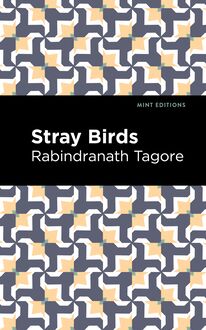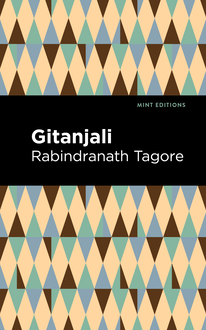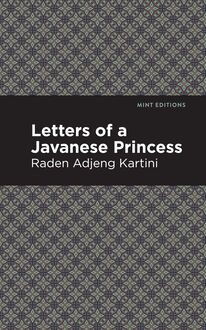-
 Univers
Univers
-
 Ebooks
Ebooks
-
 Livres audio
Livres audio
-
 Presse
Presse
-
 Podcasts
Podcasts
-
 BD
BD
-
 Documents
Documents
-
- Cours
- Révisions
- Ressources pédagogiques
- Sciences de l’éducation
- Manuels scolaires
- Langues
- Travaux de classe
- Annales de BEP
- Etudes supérieures
- Maternelle et primaire
- Fiches de lecture
- Orientation scolaire
- Méthodologie
- Corrigés de devoir
- Annales d’examens et concours
- Annales du bac
- Annales du brevet
- Rapports de stage
La lecture à portée de main
Vous pourrez modifier la taille du texte de cet ouvrage
Découvre YouScribe en t'inscrivant gratuitement
Je m'inscrisDécouvre YouScribe en t'inscrivant gratuitement
Je m'inscrisEn savoir plus
Vous pourrez modifier la taille du texte de cet ouvrage
En savoir plus

Description
The Bird of Time (1912) is a poetry collection by Sarojini Naidu. Naidu’s second book of English verse is steeped in the Romantic tradition while entirely conscious of the present political strife of her native India. From songs of love to portraits of urban life, Naidu’s poems reflect her commitment to feeling, both for herself and for others. Traditional and modern, The Bird of Time is a powerful collection from a young poet on the brink of an impassioned life in politics. “O Bird of Time on your fruitful bough / What are the songs you sing? . . . / Songs of the glory and gladness of life, / Of poignant sorrow and passionate strife, / And the lilting joy of the spring…” In this mysterious ode, Naidu addresses the themes of her own multitudinous poems—life, love, grief, and nature, among countless others. Is the Bird of Time her muse, or a symbol for poetry itself? How can a poem express “the pride of a soul that has conquered fate?” As in much of Naidu’s poetry, the symbolic maintains its distance in order to reflect a deeper, perhaps even personal truth. To describe the poem, to assign it meaning, would ultimately negate the need for poetry itself, whose powers must remain at least partially veiled. Elsewhere in the collection, “In the Bazaars of Hyderabad” reflects her commitment to the struggle for Indian independence as it celebrates the homegrown produce and handmade wares of a proud and lively people. Moving along the street, she sings to vendors, goldsmiths, and musicians alike, concluding before a group of flower-girls, whose work serves weddings and funerals. Beneath this vibrant imagery is a call to action for the Swadeshi movement, a boycott of foreign goods designed to strike a blow against British commerce. With a beautifully designed cover and professionally typeset manuscript, this edition of Sarojini Naidu’s The Bird of Time is a classic work of Indian literature reimagined for modern readers.
Sujets
Informations
| Publié par | Mint Editions |
| Date de parution | 08 juin 2021 |
| Nombre de lectures | 0 |
| EAN13 | 9781513223995 |
| Langue | English |
| Poids de l'ouvrage | 1 Mo |
Informations légales : prix de location à la page 0,0300€. Cette information est donnée uniquement à titre indicatif conformément à la législation en vigueur.
Extrait
The Bird of Time
Songs of Life, Death & the Spring
Sarojini Naidu
The Bird of Time: Songs of Life, Death & the Spring was first published in 1912.
This edition published by Mint Editions 2021.
ISBN 9781513299419 | E-ISBN 9781513223995
Published by Mint Editions®
minteditionbooks.com
Publishing Director: Jennifer Newens
Design & Production: Rachel Lopez Metzger
Project Manager: Micaela Clark
Typesetting: Westchester Publishing Services
“The bird of Time has but a little way
To fly… and, lo! The bird is on the wing.”
C ONTENTS I NTRODUCTION S ONGS OF L OVE AND D EATH T HE B IRD OF T IME D IRGE A N I NDIAN L OVE S ONG I N R EMEMBRANCE L OVE AND D EATH T HE D ANCE OF L OVE A L OVE S ONG FROM THE N ORTH A T T WILIGHT A LONE A R AJPUT L OVE S ONG A P ERSIAN L OVE S ONG T O L OVE S ONGS OF THE S PRINGTIME S PRING A S ONG IN S PRING T HE J OY OF THE S PRINGTIME V ASANT P ANCHAMI I N A T IME OF F LOWERS I N P RAISE OF G ULMOHUR B LOSSOMS N ASTURTIUMS G OLDEN C ASSIA C HAMPAK B LOSSOMS E CSTASY I NDIAN F OLK- S ONGS V ILLAGE S ONG S LUMBER S ONG FOR S UNALINI S ONGS OF MY C ITY B ANGLE-SELLERS T HE F ESTIVAL OF S ERPENTS S ONG OF R ADHA THE M ILKMAID S PINNING S ONG H YMN TO I NDRA , L ORD OF R AIN S ONGS OF L IFE D EATH AND L IFE T HE H USSAIN S AAGAR T HE F AERY I SLE OF J ANJIRA T HE S OUL’S P RAYER T RANSIENCE T HE O LD W OMAN I N THE N IGHT A T D AWN A N A NTHEM OF L OVE S OLITUDE A C HALLENGE TO F ATE T HE C ALL TO E VENING P RAYER I N S ALUTATION TO THE E TERNAL P EACE M EDLEY F AREWELL G UERDON
I NTRODUCTION
It is only at the request, that is to say at the command, of a dear and valued friend that I consent to write these few sentences. It would seem that an “introduction” can only be needed when the personage to be “introduced” is unknown in a world prepared to welcome her but still ignorant of her qualities. This is certainly not the case with Mrs. Naidu, whose successive volumes, of which this is the third, have been received in Europe with approval, and in India with acclamation. Mrs. Naidu is, I believe, acknowledged to be the most accomplished living poet of India—at least, of those who write in English, since what lyric wonders the native languages of that country may be producing I am not competent to say. But I do not think that any one questions the supreme place she holds among those Indians who choose to write in our tongue. Indeed, I am not disinclined to believe that she is the most brilliant, the most original, as well as the most correct, of all the natives of Hindustan who have written in English. And I say this without prejudice to the fame of that delicious Toru Dutt, so exquisite in her fragility, whose life and poems it was my privilege to reveal to the world thirty years ago. For in the case of Toru Dutt, beautiful as her writings were, there was much in them to be excused by her youth, her solitude, the extremely pathetic circumstances of her brief and melancholy career. In the maturer work of Mrs. Naidu I find nothing, or almost nothing, which the severest criticism could call in question.
In a gracious sentence, published seven or eight years ago, Sarojini Naidu declared that it was the writer of this preface “who first showed” her “the way to the golden threshold” of poetry. This is her generous mode of describing certain conditions which I may perhaps be allowed to enlarge upon so far as they throw light on the contents of the volume before us. It is needless for me to repeat those particulars of the Indian poet’s early life, so picturesque and so remarkable, which were given by Mr. Arthur Symons in the excellent essay which he prefixed to her volume of 1905. Sufficient for my purpose it is to say that when Sarojini Chattop ā dhy ā y—as she then was—first made her appearance in London, she was a child of sixteen years, but as unlike the usual English maiden of that age as a lotus or a cactus is unlike a lily of the valley. She was already marvellous in mental maturity, amazingly well read, and far beyond a Western child in all her acquaintance with the world.
By some accident—now forgotten, but an accident most fortunate for us—Sarojini was introduced to our house at an early date after her arrival in London, and she soon became one of the most welcome and intimate of our guests. It was natural that one so impetuous and so sympathetic should not long conceal from her hosts the fact that she was writing copiously in verse—in English verse. I entreated to be allowed to see what she had composed, and a bundle of MSS was slipped into my hand. I hastened to examine it as soon as I was alone, but now there followed a disappointment, and with it an embarrassment, which, in the face of what followed, I make no scruple of revealing. The verses which Sarojini had entrusted to me were skilful in form, correct in grammar and blameless in sentiment, but they had the disadvantage of being totally without individuality. They were Western in feeling and in imagery; they were founded on reminiscences of Tennyson and Shelley; I am not sure that they did not even breathe an atmosphere of Christian resignation. I laid them down in despair; this was but the note of the mocking-bird with a vengeance.
It was not pleasant to daunt the charming and precocious singer by so discouraging a judgment; but I reflected on her youth and her enthusiasm, and I ventured to speak to her sincerely. I advised the consignment of all that she had written, in this falsely English vein, to the waste-paper basket. I implored her to consider that from a young Indian of extreme sensibility, who had mastered not merely the language but the prosody of the West, what we wished to receive was, not a r é chauff é of Anglo-Saxon sentiment in an Anglo-Saxon setting, but some revelation of the heart of India, some sincere penetrating analysis of native passion, of the principles of antique religion and of such mysterious intimations as stirred the soul of the East long before the West had begun to dream that it had a soul. Moreover, I entreated Sarojini to write no more about robins and skylarks, in a landscape of our Midland counties, with the village bells somewhere in the distance calling the parishioners to church, but to describe the flowers, the fruits, the trees, to set her poems firmly among the mountains, the gardens, the temples, to introduce to us the vivid populations of her own voluptuous and unfamiliar province; in other words, to be a genuine Indian poet of the Deccan, not a clever machine-made imitator of the English classics.
With the docility and the rapid appreciation of genius, Sarojini instantly accepted and with as little delay as possible acted upon this suggestion. Since 1895 she has written, I believe, no copy of verses which endeavours to conceal the exclusively Indian source of her inspiration, and she indulges with too enthusiastic gratitude the friend whose only merit was to show her “the way to the golden threshold.” It has been in her earlier collections, and it will be found to be in this, the characteristic of Mrs. Naidu’s writing that she is in all things and to the fullest extent autochthonous. She springs from the very soil of India; her spirit, although it employs the English language as its vehicle, has no other tie with the West. It addresses itself to the exposition of emotions which are tropical and primitive, and in this respect, as I believe, if the poems of Sarojini Naidu be carefully and delicately studied they will be found as luminous in lighting up the dark places of the East as any contribution of savant or historian. They have the astonishing advantage of approaching the task of interpretation from inside the magic circle, although armed with a technical skill that has been cultivated with devotion outside of it.
Those who have enjoyed the earlier collections of Mrs. Naidu’s poems will find that in “The Bird of Time” the note of girlish ecstasy has passed, and that a graver music has taken its place. She has lived—and this is another facet of her eminent career—in close companionship with sorrow; she has known the joy and also the despair of consolation. The sight of much suffering, it may be, has thinned her jasmine-garlands and darkened the azure of her sky. It is known to the world that her labours for the public weal have not been carried out without deep injury to her private health. But these things have not slackened the lyric energy of Sarojini; they have rather given it intensity. She is supported, as the true poet must be, by a noble ambition. In her childhood she dreamed magnificently; she hoped to be a Goethe or a Keats for India.
-
 Univers
Univers
-
 Ebooks
Ebooks
-
 Livres audio
Livres audio
-
 Presse
Presse
-
 Podcasts
Podcasts
-
 BD
BD
-
 Documents
Documents
-
Jeunesse
-
Littérature
-
Ressources professionnelles
-
Santé et bien-être
-
Savoirs
-
Education
-
Loisirs et hobbies
-
Art, musique et cinéma
-
Actualité et débat de société
-
Jeunesse
-
Littérature
-
Ressources professionnelles
-
Santé et bien-être
-
Savoirs
-
Education
-
Loisirs et hobbies
-
Art, musique et cinéma
-
Actualité et débat de société
-
Actualités
-
Lifestyle
-
Presse jeunesse
-
Presse professionnelle
-
Pratique
-
Presse sportive
-
Presse internationale
-
Culture & Médias
-
Action et Aventures
-
Science-fiction et Fantasy
-
Société
-
Jeunesse
-
Littérature
-
Ressources professionnelles
-
Santé et bien-être
-
Savoirs
-
Education
-
Loisirs et hobbies
-
Art, musique et cinéma
-
Actualité et débat de société
- Cours
- Révisions
- Ressources pédagogiques
- Sciences de l’éducation
- Manuels scolaires
- Langues
- Travaux de classe
- Annales de BEP
- Etudes supérieures
- Maternelle et primaire
- Fiches de lecture
- Orientation scolaire
- Méthodologie
- Corrigés de devoir
- Annales d’examens et concours
- Annales du bac
- Annales du brevet
- Rapports de stage

















